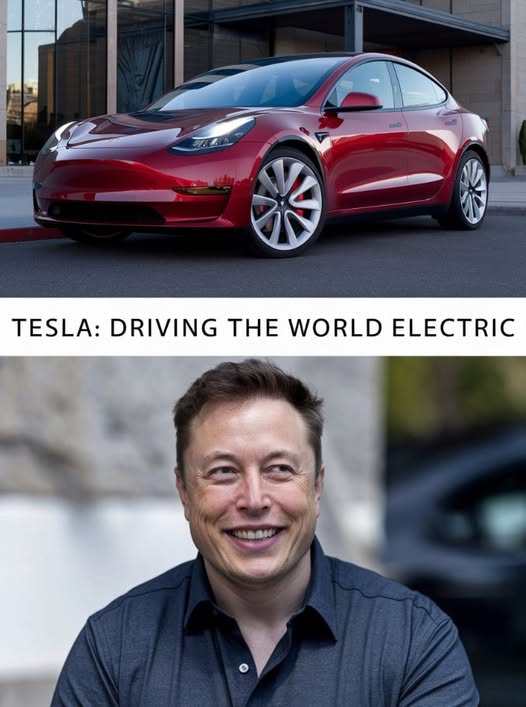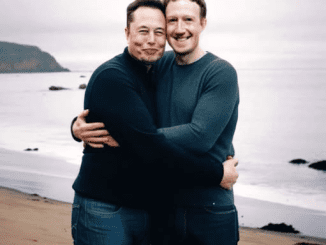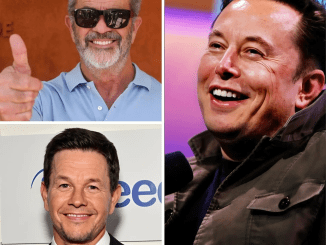
In a world grappling with the consequences of climate change and rising carbon emissions, one company has emerged not just as a disruptor—but as a global force driving the transformation of how we move, how we live, and how we power our future. That company is Tesla. Founded in 2003 and led by the ever-ambitious Elon Musk, Tesla has gone far beyond making cool cars; it is laying down the path to an entirely electric and sustainable world—one innovation at a time.
⚡ The Spark That Lit the Revolution
When Tesla first launched the Roadster in 2008, skeptics scoffed. A sleek electric sports car with a high price tag and limited range didn’t seem like a threat to the gas-guzzling giants. But it was never just about one car—it was about proving what was possible. The Roadster was Tesla’s proof of concept. What followed were the Model S, Model X, Model 3, Model Y, and Cybertruck—each representing a strategic leap in affordability, efficiency, and mass-market appeal.
Today, Tesla’s vehicles are among the best-selling EVs globally, and the company’s valuation often places it higher than the combined worth of legacy automakers. But this is just the beginning.
🌍 More Than Just a Car Company
Tesla’s mission has always been bigger than vehicles. The company is actively transforming energy generation, storage, and usage. Products like the Powerwall, Solar Roof, and Megapack allow individuals, businesses, and even governments to become more energy-independent. The Gigafactories—Tesla’s massive manufacturing hubs across the globe—are not just car factories; they are temples of vertical integration and renewable energy scaling.
Tesla’s solar and battery operations are already working to stabilize national grids and provide emergency backup in places like Australia and Puerto Rico. These systems are proving that clean, reliable, and decentralized energy is no longer a futuristic dream—it’s happening now.
🚗 Driving the EV Boom
Tesla’s influence has fundamentally altered the automotive landscape. Once slow to change, traditional automakers have been forced to catch up, accelerating their own EV programs. Companies like Ford, Volkswagen, and GM have poured billions into electrification efforts—largely due to Tesla’s success.
Governments, too, are taking notice. With policies banning combustion-engine sales in countries like Norway, the UK, and parts of the U.S. by 2035 or sooner, Tesla’s long-term bet is becoming the global standard. Incentives, subsidies, and infrastructure investments are now aligning with Tesla’s vision of an all-electric future.
🧠 Tech, Software, and Autonomy
Tesla’s innovation extends far beyond its batteries and motors. Its Full Self-Driving (FSD) software, though still in development and under regulatory scrutiny, is one of the boldest steps toward autonomous vehicles. The idea: cars that drive themselves, update over-the-air, learn from the global fleet, and constantly improve—just like a smartphone.
Moreover, Tesla’s AI day, the introduction of the Dojo supercomputer, and progress on robotics (see: Optimus) are signals that the company is thinking far beyond transportation—it’s designing a fully integrated AI-driven ecosystem.
📈 Economic and Environmental Impact
Tesla isn’t just building cars—it’s building an ecosystem that could reduce global CO₂ emissions by billions of tons over the next few decades. According to their 2023 Impact Report, Tesla vehicles have prevented over 20 million metric tons of CO₂ emissions so far. Its solar energy products have generated billions of kilowatt-hours of clean electricity.
On the economic front, Tesla’s global expansion is creating tens of thousands of jobs, revitalizing supply chains, and inspiring a new generation of startups and engineers. The Gigafactories themselves have become economic engines for the regions where they’re built.
⚠️ Challenges on the Road Ahead
Despite its momentum, Tesla is not without obstacles. Supply chain shortages, competition from China’s BYD and other EV startups, regulatory hurdles, and occasional controversies involving its outspoken CEO have sparked volatility. Additionally, critics remain skeptical of Tesla’s autonomy promises and workplace practices.
But Tesla’s advantage lies in its speed of iteration, culture of innovation, and unified ecosystem. Unlike legacy automakers, Tesla builds its own chips, writes its own software, and owns most of its supply chain—giving it unmatched agility.
🌱 The Road to Tomorrow
Tesla’s vision is simple yet revolutionary: a world powered entirely by renewable energy, where transportation is electric and autonomous, and homes produce more energy than they consume. With its continued push into solar, energy storage, and AI, Tesla is not just changing the way we drive—it’s changing the way we live.
As the company continues to scale, the real question becomes: Can the rest of the world keep up?
One thing is certain: Tesla is no longer just part of the electric revolution—it is leading it. And if Elon Musk has his way, the journey has only just begun.


